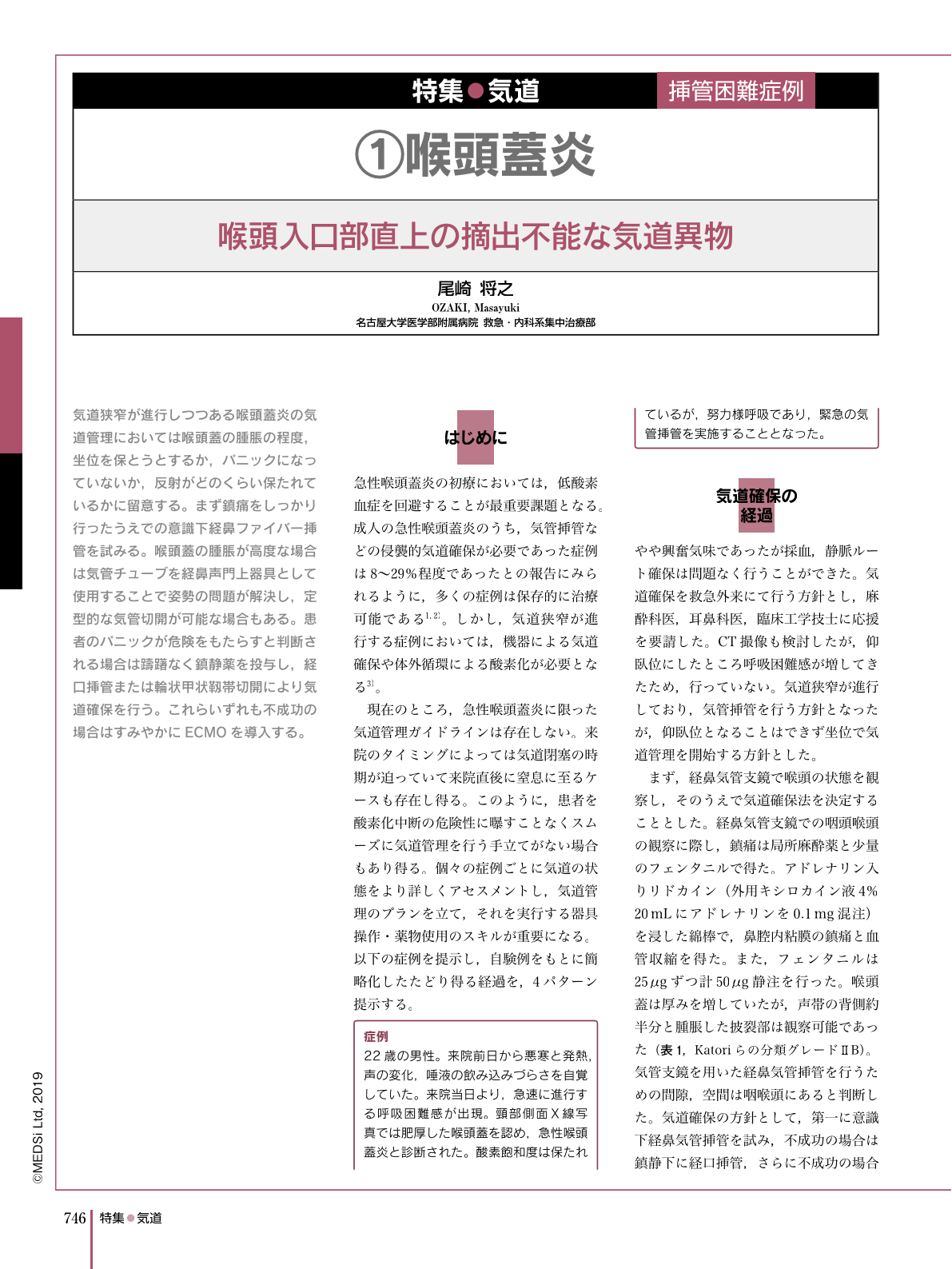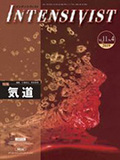Japanese
English
- 有料閲覧
- Abstract 文献概要
- 1ページ目 Look Inside
- 参考文献 Reference
気道狭窄が進行しつつある喉頭蓋炎の気道管理においては喉頭蓋の腫脹の程度,坐位を保とうとするか,パニックになっていないか,反射がどのくらい保たれているかに留意する。まず鎮痛をしっかり行ったうえでの意識下経鼻ファイバー挿管を試みる。喉頭蓋の腫脹が高度な場合は気管チューブを経鼻声門上器具として使用することで姿勢の問題が解決し,定型的な気管切開が可能な場合もある。患者のパニックが危険をもたらすと判断される場合は躊躇なく鎮静薬を投与し,経口挿管または輪状甲状靱帯切開により気道確保を行う。これらいずれも不成功の場合はすみやかにECMOを導入する。
In patients with epiglottitis, there are problems besides a difficult airway such as limitation of posture in the sitting position, agitated mental status, preserved reflex. To overcome these problems, the following strategy is proposed in this article. Primary choice of airway management procedure is awake nasal fiberoptic intubation. During this procedure the patient should be able to be calm and breathe spontaneously with intravenous administration of fentanyl. If it is unsuccessful, the next best methods include normal tracheal intubation after rapid sequence intubation (RSI) or cricothyroidotomy after RSI. An alternative method is the combination of using a tracheal tube as a supraglottic airway and tracheostomy under local anesthesia. With a tracheal tube functioning as a nasolaryngeal airway keeping patency at the site of airway narrowing, the patient can be in the supine position. If all these attempts fail, the use of veno-venous extracorporeal membrane oxygenation should be considered.

Copyright © 2019, MEDICAL SCIENCES INTERNATIONAL, LTD. All rights reserved.


